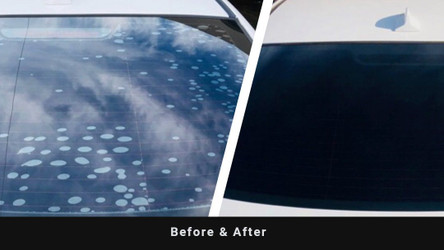3 Ways to Know Your Window Tinter Did a Good Job
by Hi-Tech Car Audio | 22nd Feb 2019

WILL IT PEEL???
It happens every week.
Customer calls. Says they spent next-to-nothing on their window tint. Then 3 – 6 months down the line their windows started to bubble or turn purple..
OUCH!
I hate to say it – but this could’ve TOTALLY been prevented in the first place if they got a credible source with a track record of happy tint customers to do the job for them.
(“COUGH-COUGH-US!”)
But I understand, money can be tight sometimes.
So, if you insist on going for the bargain-basement-price tint job, here are 3 things you should ask before they get started:
1. What kind of tint are they using?
It seems so obvious, but I’m shocked at how often customers overlook -or don’t even care about – the kind of tint they’re getting on their car.
Mistakenly, they think that all tint its created equal. Well, they’re not.
If you’re getting a tint job that costs less than $200 for 7 windows, most likely the film is flimsy, doesn’t adhere properly, or it’s just a basic dye polyester material.
So you want to ask them what kind of tint they’re using.
Generally, carbon, ceramic, sputtered, and high quality dye polyester films are a safe bet.
Stick with brands like 3M, Solar Guard, Lumar and Suntek. (our favorite)
But most importantly?
You need to make sure the tint they’re using comes with, not just a warranty, but a ‘full coverage’ lifetime warranty against peels, bubbles, fading, or turning purple.
Sometimes warranties don’t cover everything I mentioned, so asking if it’s ‘full coverage’ is vital.
2. Ask: what’s the most challenging window for them to tint?
If they say it’s ‘the back window’ then RUN for the hills.
No, just kidding.
Look, this one’s tricky.
95% of tinters will tell you that the back window is the toughest to install tint on.
But to be honest, it’s not.
You see, anyone with the right training knows that with the right technique, back windows are pretty straightforward and systematic.
A combination of a heat gun, some fabric softeners and patience will give you an awesome tint.
But most tinters won’t have you believe that.
They’ll insist that because the back windows are big and curvy, they’re the toughest to tint.
Not true.
(Well, that’s probably only true for 10% of cars out their (like hatchbacks), but for the most part, they’re straightforward)
So if you tinter is telling you this, tread VERY carefully and consider taking your car elsewhere.
3. What kind of bubbles do you notice afterwards?
It’s very normal to have wet spots and water bubbles after you get your car tinted. Usually you’ll see those clear up in 1-3 weeks.
But if you notice odd looking bubbles that are filled with air, or simply just creases, it definitely means the tint wasn’t applied properly.
Remember: 80% of tinting is just preparation.
And most times when you see this happening it’s due to a LACK of preparation on the tinters part.
So if you’re getting a tint your iffy about from the beginning … then scan your entire car for these tell tale signs.
Of course, even the best tinters make these mistakes sometimes.
But the important thing is that they fix it for you right away – and make sure it doesn’t happen in the future.


For a quality window tint done by real professionals that won’t peel, bubble, or turn purple, give us a call at 510-527-9888.

